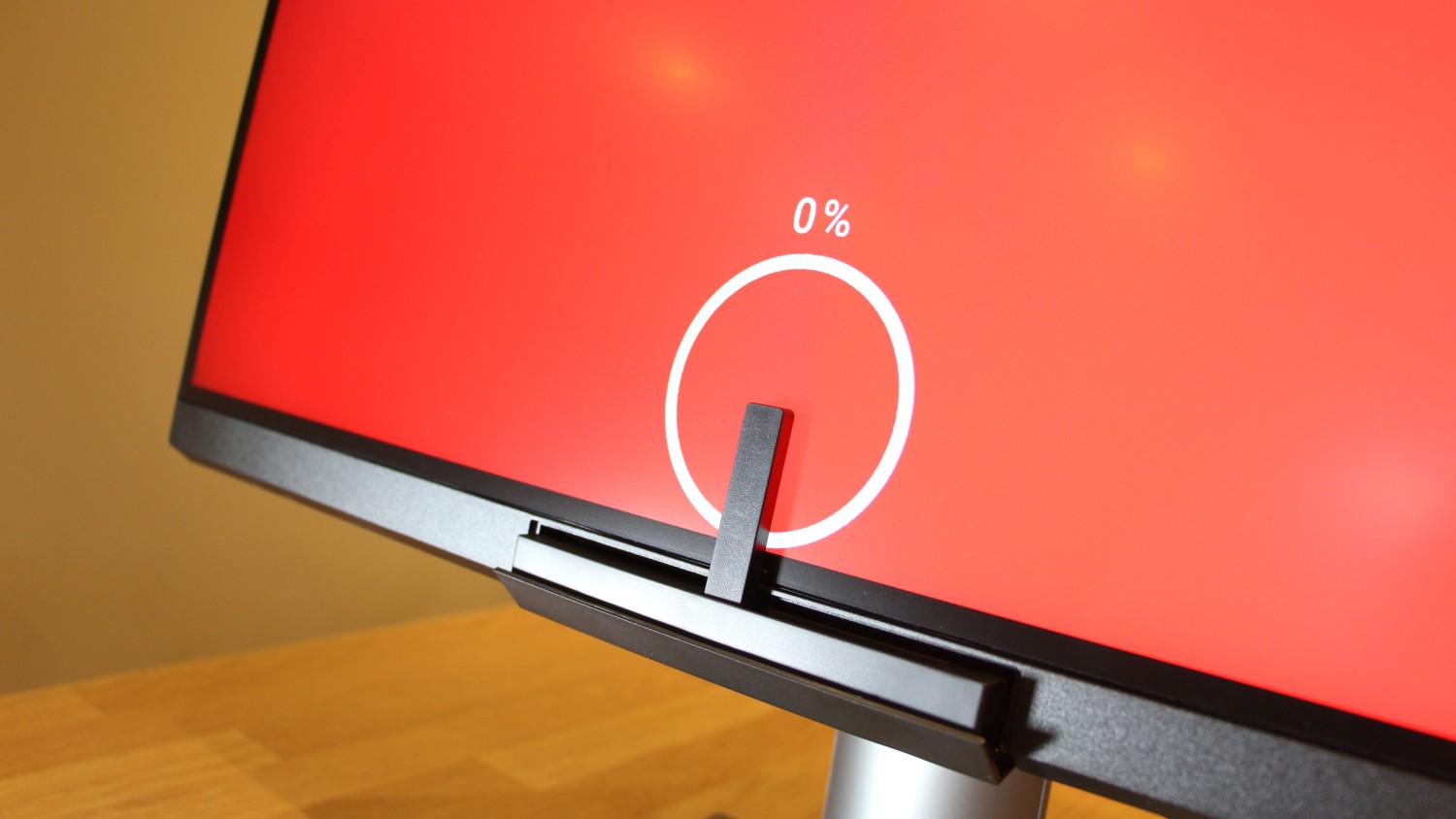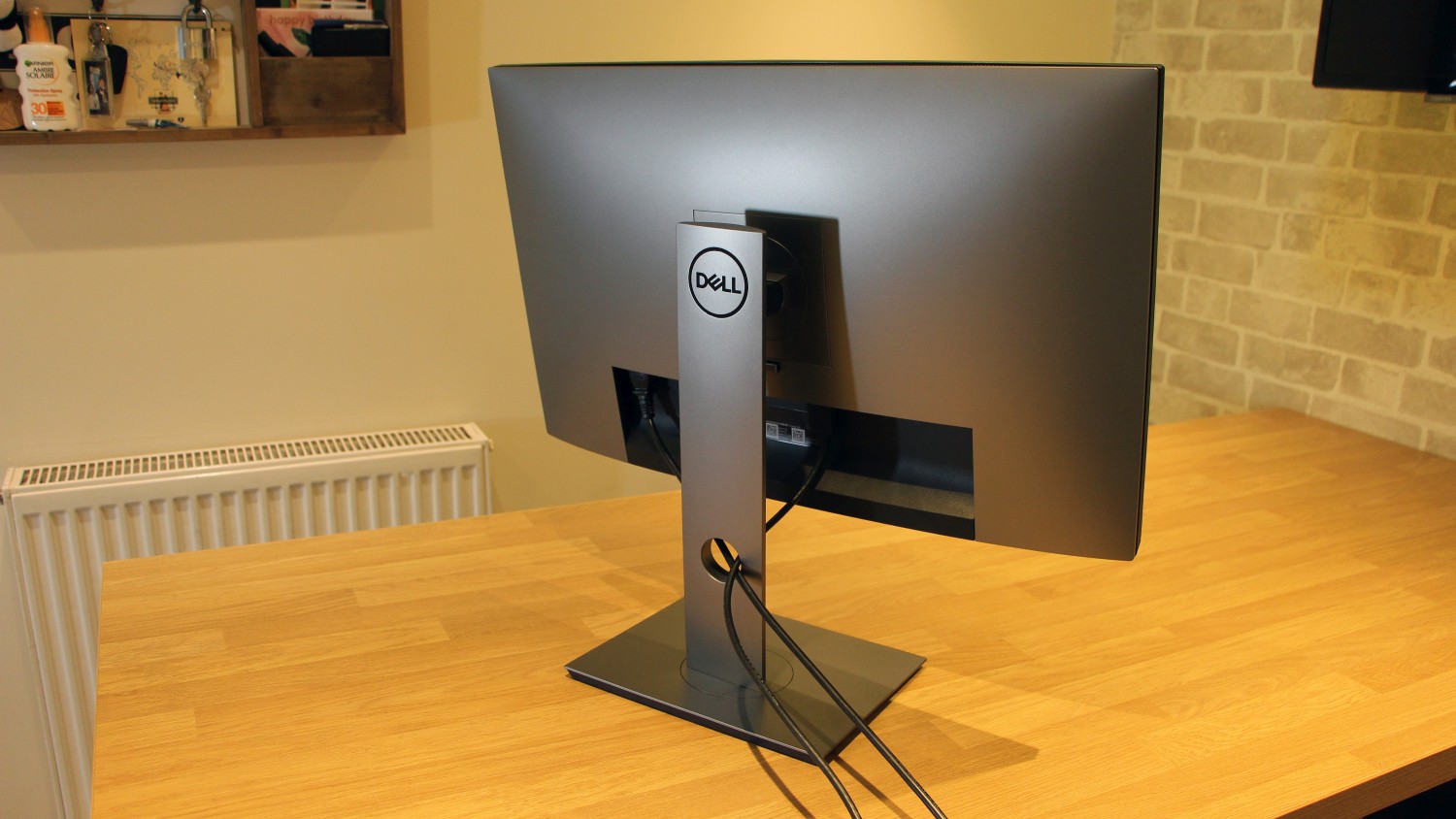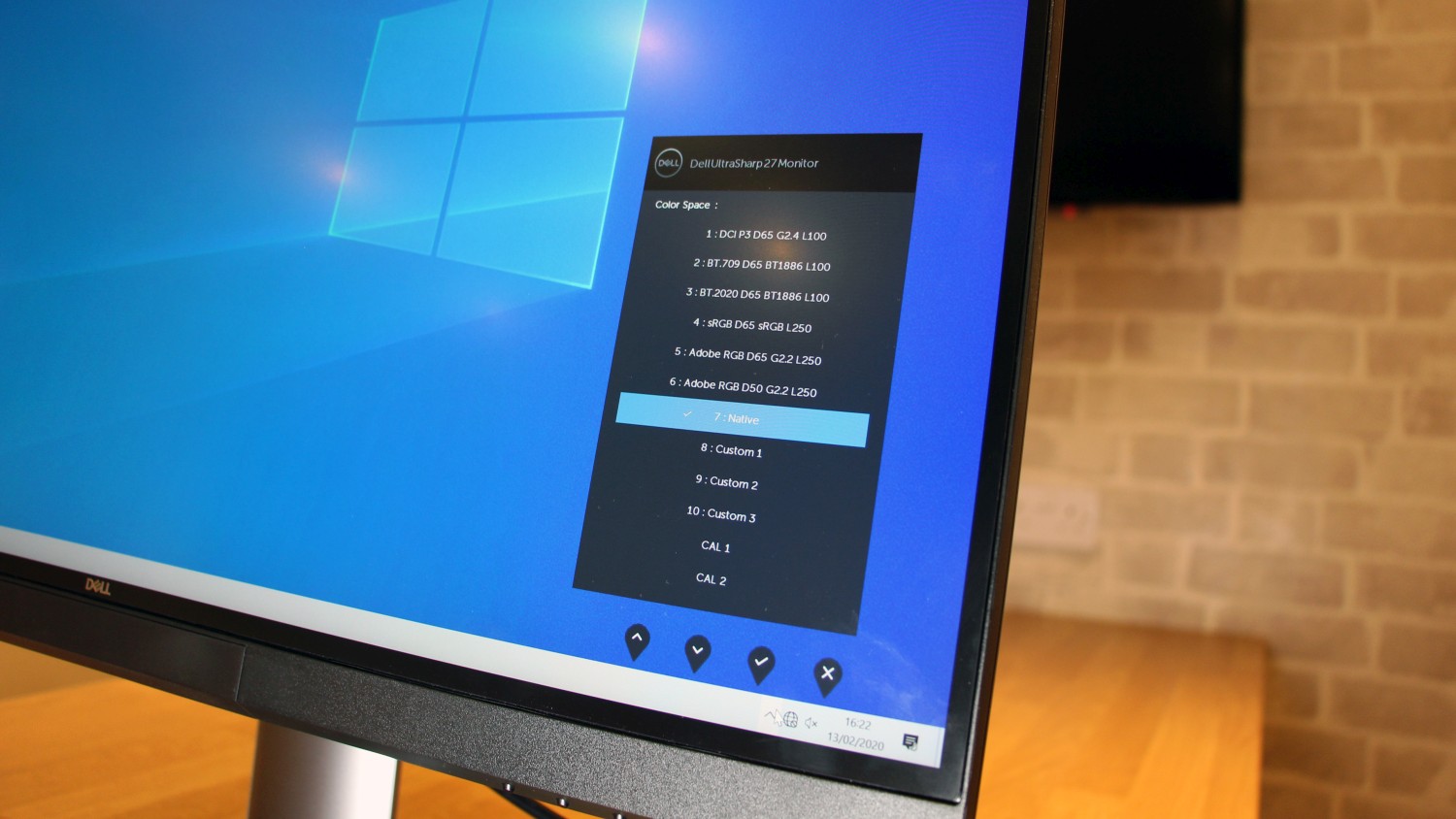Dell 27 Inch Monitor Review
Our Verdict
Dell's latest panel isn't perfect, but it's close – it has excellent image quality, versatile screen modes and loads of features alongside a crisp 4K panel and smart, solid physical design.
For
- Excellent image quality
- Crisp 4K resolution
- Built-in colorimeter
Against
- Extremely expensive
- Contrast could be better
- No picture-in-picture
Creative Bloq Verdict
Dell's latest panel isn't perfect, but it's close – it has excellent image quality, versatile screen modes and loads of features alongside a crisp 4K panel and smart, solid physical design.
Pros
- + Excellent image quality
- + Crisp 4K resolution
- + Built-in colorimeter
Cons
- - Extremely expensive
- - Contrast could be better
- - No picture-in-picture
The Dell UltraSharp UP2720Q monitor is one of the first professional screens from Dell with a built-in colorimeter. The firm also claims that this is the world's first 27-inch panel that combines a colorimeter with a Thunderbolt connection.
It's a mouthful, and the UP2720Q comes with a hefty price of $1,999/£1,330 – so you're going to have to shell out for this display. Despite that, it's worth paying the price if the Dell can pair its extensive range of features with image quality that can cope with high-end design work. Could this be one of the best monitors around?
Dell UltraSharp UP2720Q: Specs
Screen size: 27-inches | Aspect ratio: 16:9 | Resolution: 3,840 x 2,160 | Panel technology: IPS | Colour depth: 10-bit | Response time: 8ms | Adjustment: 130mm height, 180° pivot, 25° tilt, 90° swivel, 100mm VESA | Connectivity: 1 x DisplayPort 1.4, 2 x HDMI 2.0, 4 x USB 3.2, 2 x Thunderbolt 3/USB Type-C, 1 x audio | Dimensions: 612 x 212 x 563mm (WxDxH) | Weight: 9.71kg | Warranty: 3yr RTB
Dell UltraSharp UP2720Q: Features and design
Dell's display has an enviable range of features. That in-built colorimeter is the headliner, of course, and it's a key addition: it means that the display can be calibrated to run as accurately as possible with numerous popular colour spaces. It swings out from the bottom of the monitor and runs inside a circle at the bottom of the panel.

The Dell's 3,840 x 2,160 resolution is crammed into a 27in diagonal. It's a lot of pixels in a small space, which means you've got a huge amount of real-estate for working in expansive apps or in several windows at once – and the 163ppi density level means that images, text and icons are impressively crisp.
Underneath all of that is an IPS panel. It's the best technology to use for a design display because it generally ensures that best colour quality when compared to VA and TN monitors.
The Dell has a conventional 16:9 aspect ratio, it's not curved, and it has a refresh rate and response time of 60Hz and 8ms respectively. Those latter figures are not great – fine for day-to-day use and design tasks, but not ideal if you need a screen to handle fast-paced animation smoothly.
Dell pairs this impressive technology with excellent connectivity. The UP2720Q has one DisplayPort 1.4 port and two HDMI 2 connections – and its Thunderbolt 3 port is capable of delivering 90W of power, transferring data and driving second screens. There are four USB 3.2 ports, with two handily installed on the lower bezel and one configured to provide a 2A charge – handy for fast-charging phones.

The Dell has a solid 130mm of height adjustment, 90°of swivel and 25°of tilt – all conventional allocations. It has 180 degrees of pivot, which means it can swing into portrait mode, and it's compatible with 100mm VESA mounts.
It's easy to build, too: the stand snaps into the rear of the screen and the base attaches with a single thumbscrew, so no tools are required.
Build quality is great throughout – this screen is robust. It looks smart, with slim bezels and a plain metal base. The stand also has a hole for routing cables, and a shading hood is included.
The panel can be managed by Dell's on-screen display or by Dell's Colour Management application. Both are intuitive and offer a huge number of options. Luminance levels can be adjusted, grids can be placed across the screen, calibrations can be scheduled and the row of navigation keys below the bottom bezel can be customised.
The Dell can be configured to use the DCI-P3, BT.709, BT.2020, sRGB, Adobe RGB 65 and Adobe RGB 50 colour spaces and it works with CalMAN software. The Dell supports picture-by-picture for two sources, but no picture-in-picture.
Dell UltraSharp UP2720Q: Screen quality and colour accuracy
The Dell backs up its huge range of features with tremendous image quality. Each UP2720Q is calibrated at Dell's factory, which means great quality out of the box: without any modifications the Dell returned a Delta E of 0.27 and a Gamma level of 2.17. They're both fantastic – good enough to render colours accurately without human eyes being able to detect deviations.
The Dell's default brightness level of 155cd/m2 is modest, but good – high enough to provide clarity but not high enough to make users' eyes tired. The black point of 0.16cd/m2 is very deep, which means that darker shades have huge depth and subtlety on this display.
Those figures create a contrast ratio of 968:1. That's a little below Dell's quoted 1,300:1 figure, but it's still a good result and still good enough for the vast majority of mainstream and professional design tasks.

The panel's colour temperature of 6,872K is a tad high, and it means that this display's colours are a little on the cool side. However, the Dell's result isn't far enough away from the 6,500K ideal figure to cause noticeable problems, even in professional situations.
It's a great start for the Dell. Happily, the panel's contrast levels and colour accuracy were maintained when we ramped the brightness up to its maximum value of 255cd/m2. Calibration also saw the display maintain its excellent image quality levels.
The Delta E improved to 0.24 in Adobe RGB mode, and the Delta E remained below 2.0 in DCI-P3 mode.
Dell's panel can clearly handle different gamuts, too: it rendered a stunning 99.8% of the sRGB gamut, 96.1% of the Adobe RGB space and 95% of the DCI-P3 gamut. Those figures mean that the Dell can work effectively in all of those colour spaces. Dell also claims an 80% coverage level in the broadcast-centric BT.2020 space.
The UP2720Q has excellent uniformity. The Dell lost 6% of its backlight strength in the top-left corner, with its Delta E declining to 2.46. Elsewhere, the screen was far better, with sub-4% backlight loss and Delta Es that remained in line with our benchmarks.
While that top-left corner is this display's weak spot, the Dell's uniformity results are still excellent and still better than most other screens – so work won't be hampered at all.
Dell UltraSharp UP2720Q monitor: Should you buy it?
The Dell UltraSharp UP2720Q is excellent. At its core, it has superb image quality, with fantastic colours and black levels, top-notch gamut coverage and impressive uniformity alongside a versatile selection of screen modes and colour spaces.
We only have minor quibbles when it comes to the display itself. The Dell's contrast level is good, but it could be a bit better – and the colour temperature could be closer to 6,500K. Happily, these issues are small, and quality levels throughout are so good that they don't hinder design and work tasks.
Elsewhere, the Dell has great versatility: loads of connectivity and movement options, good software, a huge resolution and its colorimeter.
It may not be perfect, but the Dell UltraSharp UP2720Q isn't far away thanks to great image quality and loads of features. If you need a high-end design screen, it's a superb option.
Read more: The best ultrawide monitor
Dell UltraSharp UP2720Q
Dell's latest panel isn't perfect, but it's close – it has excellent image quality, versatile screen modes and loads of features alongside a crisp 4K panel and smart, solid physical design.
Dell 27 Inch Monitor Review
Source: https://www.creativebloq.com/reviews/dell-ultrasharp-up2720q-monitor-review
Posted by: claytonwhisconce.blogspot.com

0 Response to "Dell 27 Inch Monitor Review"
Post a Comment